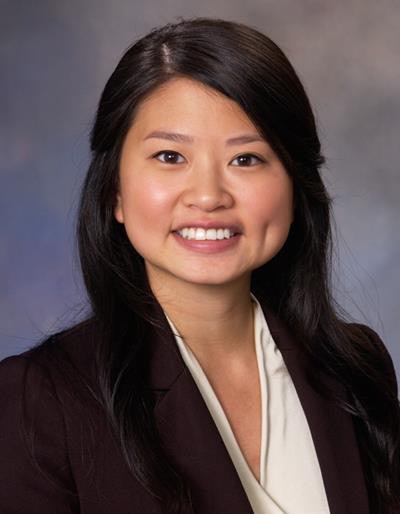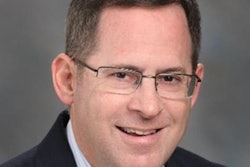
HONOLULU - Rates of breast ultrasound (US) use have slowly trended upward in states that have adopted breast density notification laws, but this growth has yet to cross the threshold of statistical significance, according to a presentation at the American Roentgen Ray Society (ARRS) annual meeting.
The researchers from the University of Washington School of Medicine in Seattle examined physician ordering practices in the U.S. to determine if the implementation of breast density notification laws has increased orders for screening breast ultrasound exams in the past decade.
A state-level subanalysis revealed no association between the adoption of state density notification laws and ordering rates of screening ultrasound. Even with more states adopting density notification laws over time, the group did not observe a statistically significant increase in the overall rate of ultrasound orders per year, with rates remaining low particularly for women age 50 to 74.
Still, the slight but steady growth in breast ultrasound usage rates bodes well for the screening exam, and the growth may possibly become more substantial over time, presenter Dr. Geraldine Liao told session attendees.
"It may just be that more time is needed to detect change in our dataset," she said. "Alternatively, because variable patient preferences could increase or decrease screening ultrasound ordering rates, notification laws may have led to shared decision-making discussions that prompted patients to decline supplemental screening breast ultrasound."
Letter of the law
At least 37 states currently mandate breast density reporting, and that number is likely to multiply soon in light of the February 15 passage of federal legislation requiring mammography facilities to include appropriate information about breast density. Even more recently, the U.S. Food and Drug Administration (FDA) proposed further amending the Mammography Quality Standards Act (MQSA) to enforce facilities' compliance with density reporting quality standards.
 Dr. Geraldine Liao from the University of Washington School of Medicine.
Dr. Geraldine Liao from the University of Washington School of Medicine.Accordingly, the growing adoption of breast density notification laws throughout the U.S. may have sparked increases in the use of breast ultrasound as well. Indeed, a recent study by Busch et al from the Yale School of Public Health reported a marked increase in breast ultrasound usage rates for a cohort of privately insured women in their 40s and 50s.
However, this increase was only statistically significant in states where notifications specifically advised women of supplemental screening options. (For many states, the notification law requires that facilities inform women of tissue density but not necessarily promote additional screening.)
In the current study, Liao and colleagues also examined trends in breast ultrasound use but in a broader group of individuals during a longer stretch of time. They obtained data from the National Ambulatory Medical Care Survey (NAMCS), for survey years 2007 through 2015, which the National Center for Health Statistics administers every year to track office-based outpatient clinic encounters throughout the U.S. They limited the dataset to cover preventive services visits for women age 40 to 74 who did not present with breast symptoms or signs prior to the visit.
The researchers' investigation centered on trends in screening breast ultrasound before and one year after the adoption of any type of density notification law in the 34 most populous states. The multivariable analysis considered a variety of factors, including patient demographics, form of payment, physician specialty, location, and type of computer system for ordering tests, among others.
Trending up
Out of the 12,787 visits that met the criteria, ordering clinicians requested a breast ultrasound screening exam for only 3.3% of the women. This was much lower than the rate of other tests ordered for the same cohort, including 22.1% for mammography and 28.9% for a clinical breast examination.
Furthermore, the researchers did not observe a statistically significant association between the state-level adoption of breast density reporting laws and order rates for screening breast ultrasound.
| Ordering rates for breast screening exams in the U.S. from 2007 to 2015 | ||
| Before state-level adoption of density notification law | After state-level adoption of density notification law | |
| Ultrasound | 3.9% | 4.2% |
| Ultrasound with mammogram | 7.1% | 10% |
Although the overall increase in orders for breast ultrasound screening was not statistically significant, the rate did display an upward trend. Over the 10-year period, the relative change in order rate was an increase of 1.1% for screening ultrasound and 1.4% for screening ultrasound plus mammography.
The researchers additionally discovered that a number of factors had a statistically significant association with an increase in breast ultrasound orders, including the following:
- Being younger, i.e., age 40 to 49
- Living in an urban area
- Having a mammogram ordered
- Being attended to by an obstetrician/gynecologist
- Going to a facility that does not use automated reminders for screening
"We found that ultrasound ordering was associated with several patient and practice variables, some of which have intuitive explanations," Liao said. "For example, younger women undergoing screening mammography were more likely to have screening ultrasound ordered, possibly reflecting the greater likelihood of having dense breasts."
One curious finding was that offices that sent computerized reminders about screening tests to their ordering physicians turned out to request significantly fewer breast ultrasound screening exams, she noted.
"This negative association could reflect a lack of automated reminders designed specifically for screening breast ultrasound, as it is not commonplace yet," she said. "A lack of that reminder in the presence of other reminders that specifically stress screening mammography could reduce the impetus for physicians to pursue shared decision-making with patients."



















